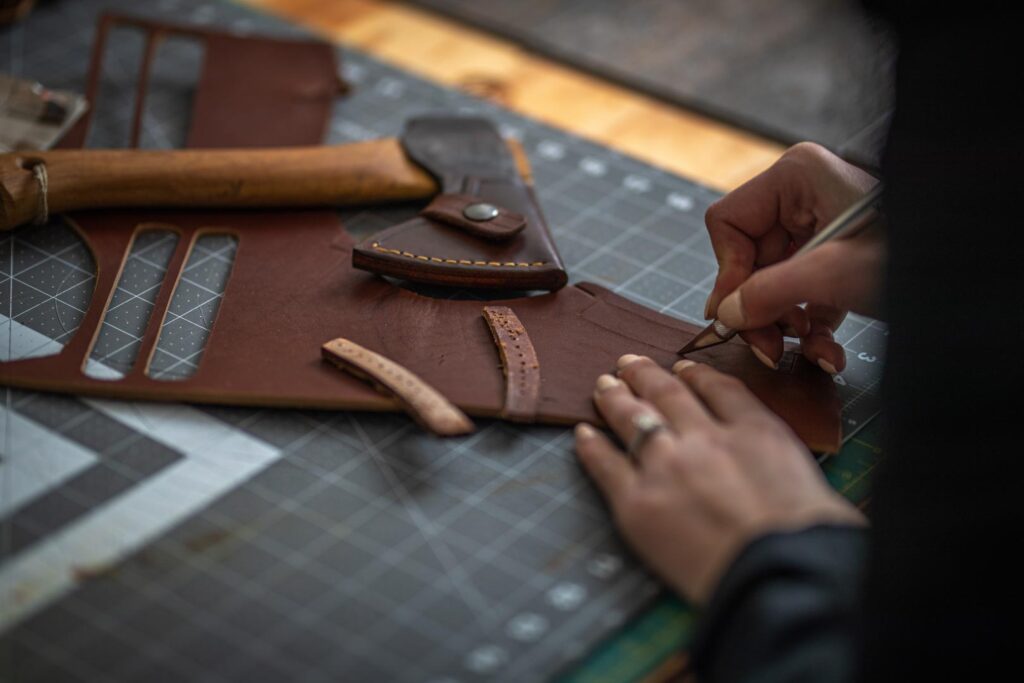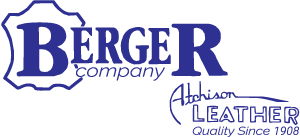Rely on Berger for Wholesale Distribution
Wholesale Distributor
In addition to our manufacturing capabilities we represent several tanneries. Our primary distribution facility in Atchison, Kansas, allows us to distribute high-quality leathers on their behalf throughout the USA and Canada.
We have a secondary distribution location in Houston, Texas, for direct shipments of full pallet loads.
When it comes to distribution, we specialize in vegetable-tanned and chrome leather wholesale to other manufacturers.

The Story Behind Our Leather
Leather comes from animals, most of which are raised for the food industry. The hides Berger distributes come from those animals. When demand for meat rises or falls, the supply of hides follows suit.
As a leather distributor, we are proud to say that this process is an excellent form of recycling. Instead of animal hides filling landfills or becoming biological hazards, they are now tanned into leather that is used for durable goods and various applications, like the knife sheaths we produce. Leather goods can be further recycled, or up-cycled, with the production of repurposed leather goods or bonded leather.
Superior Natural Qualities
- It is flexible.
- It is soft.
- It is strong and durable.
- It can “patina” over time from abrasion, wear, or sun exposure, which gives it a rich, unique look.
Superior Natural Qualities
-
Full Grain Leather
This is the highest quality of the types of leather. Its surface remains unmodified giving you the full substance of the hide and showing all its natural characteristics. This is considered Top Grain Leather as it weathers better than any other leather alternative. -
Corrected Grain Leather
Similar to full grain leather where most of the hide substance remains, this leather has a surface that is lightly sanded or further prepared before it is finished. This conceals some of the natural characteristics of the hide. While this type of leather is not a true Full Grain, it is a great alternative and is called Top Grain Leather. -
Split leather
When a manufacturer removes the Top Grain of the hide, the part below that surface that remains is referred to as the “Split”. -
Bonded Leather
This type of leather results from a manufacturer combining reprocessed leather offal with synthetic materials to make a uniform-size sheet.
The Process Behind Tanning
To transform a raw animal hide into a durable, usable piece of leather, it first must go through a tanning process. The leather industry has two methods for tanning.
-
Vegetable Leather
In this method, a hide is soaked in a solution of extracts from trees called Vegetable Tannins (Quebracho, Mimosa, etc.). The process turns the hide into a flexible, durable leather referred to as Vegetable Tanned Leather. Vegetable tanning is a longer, more complex tanning process that is performed by skilled craftsmen. -
Chrome Leather
The majority of leather used in production worldwide undergoes the process of Chrome Tanning. It uses a safe compound mineral called Trivalent Chromium and is a faster alternative to vegetable tanning. The result is a softer, thinner leather that is stronger than vegetable-tanned leather.
